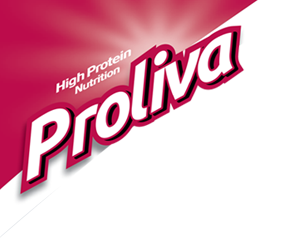-
Male Cyclists: bones, body composition, nutrition, performance – BJSM blog
12.03.2018There has been much recent coverage regarding female runners suffering with health and performance issues due to relative energy deficiency in sports (RED-S). What about male athletes? A recent article about male cyclists who explained how they developed RED-S, did not receive as sympathetic a response as articles concerning female athletes. Yet multiple Endocrine network disruption in RED-S, associated with suboptimal health and performance, is equally applicable to male and female athletes.
Although competitive road cycling is excellent for cardiovascular (CV) fitness, why are male cyclists at particular risk of impaired bone health and RED-S? Cycling is a non-weight bearing type of exercise, as is swimming, so does not provide much osteogenic (bone building) stimulus. The additional element in road cycling is that, in the short term, low body weight, with associated low body fat, confers a performance advantage. However this can lead to restrictive nutrition and RED-S, that have adverse effects on health and performance, over the longer term.
A recent study looking at bone acquisition in adolescent males found that bone mass, microarchitecture and makers of bone formation were more favourable in footballers compared with cyclists and swimmers. Swimmers had the lowest Vitamin D, presumably as this is generally an indoor sport (unless you live in Australia where outdoor 50m pools abound). Another study found reduction in femoral neck bone mineral accumulation in adolescent male cyclists compared against increases over the same time frame seen in controls.

What about adult male road cyclists? When runners and cyclists were matched for age and body weight, there were no significant differences in hormone or nutrition status, yet cyclists were 7 times more likely to have osteopenia of the lumbar spine than runners. Similar results were found in another study where competitive male road cyclists were found to have reduced lumbar spine bone mineral density (BMD) for age, despite normal levels of testosterone and insulin-like growth factor 1 (IGF1), although intriguingly an inverse correlation with lumbar spine BMD and IGF1 was found. It appears that the biomechanical stress patterns on the spine in cycling are not oesteogenic in nature, which contrasts with rowing where, although also seated, the biomechanical load exerted through the spine does provide an osteogenic effect.
In addition to the non-load bearing nature of cycling on the skeleton, restrictive nutrition can contribute to suboptimal bone health. Reducing energy availability by restricting energy intake whilst increasing training load can be a strategy, especially during pre-season training to reduce body weight and body fat. Essentially, cycling up a steep incline demands less power through the pedals if your body weight is low. Nevertheless, reducing energy availability runs the risk of developing RED-S, associated Endocrine dysfunction and suboptimal bone health, on top of the non-beneficial mechanical osteogenic effect of cycling. On a practical note, with long training rides in the saddle it can be physically and practically difficult to fuel optimally. Recent research in female athletes shows that within day energy deficits magnify hormonal disruption. Could this be a factor in male cyclists where consistent fuelling is either actively avoided and/or practically difficult?
The psychological element of disordered eating has been described amongst elite male cyclists. Male cyclists, in particular, collect many metrics associated with training and racingwhich could be a manifestation of a drive to perfectionism. Determination and attention to detail are laudable qualities for athletes, but there is a fine line when the balance swings to behaviours and attitudes that can be detrimental to health and performance. Even starting off with good intentions can lead to problems as seen with the growing emergence of orthorexia: “clean eating”, which, ironically, becomes detrimental to health and performance with exclusion of food groups such as carbohydrates.
Exclusively practising a non-weight bearing sport such as cycling although great for CV fitness, is not so good for bone health. Does this matter? Potentially injury is more likely in bike spills, which occur both in training and competition even for the most experienced bike handler. Combined with the drive for low body weight in competitive road cycling, health and performance issues can be compounded with RED-S. What are the solutions for the cyclist to support favourable body composition and bone health, which ultimately also optimises performance? A further planned study, following a current pilot study of competitive road cyclists, aims to investigate the potential beneficial effects of strength and conditioning to load the skeleton combined with a review of nutrition.
Latest Blog Post
- Sugary Drinks Linked to a Higher Cancer Risk
- The Latest Research on Protein and Muscle-Building
- 27 Health and Nutrition Tips That Are Actually Evidence-Based
- Tall order: More to good growth in toddlers than just measurements
- Millions of cardiovascular deaths attributed to not eating enough fruits and vegetables

